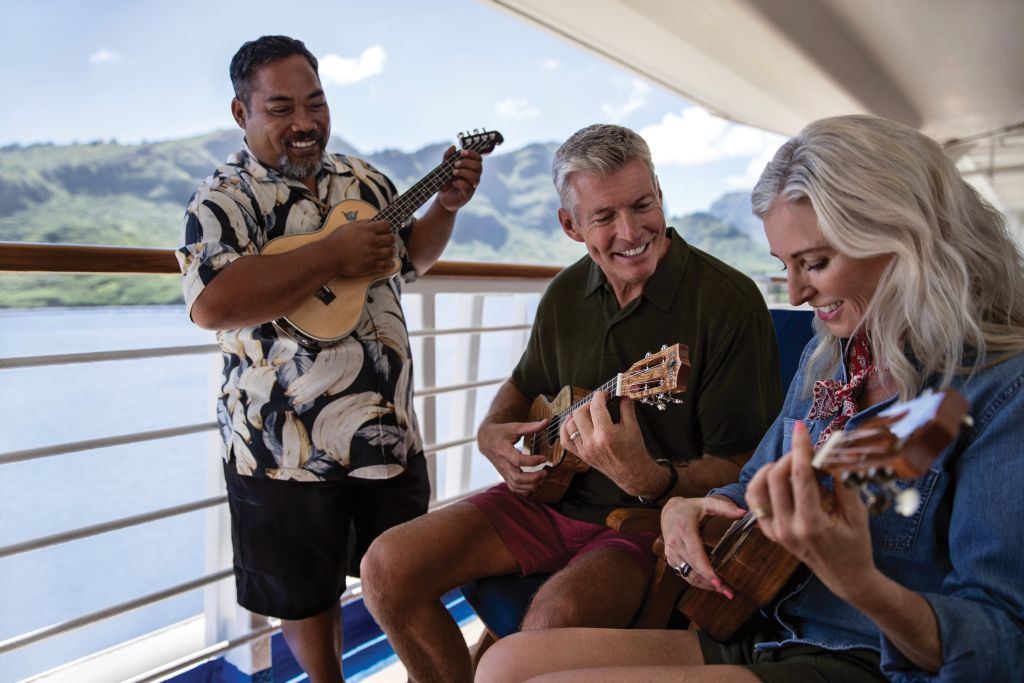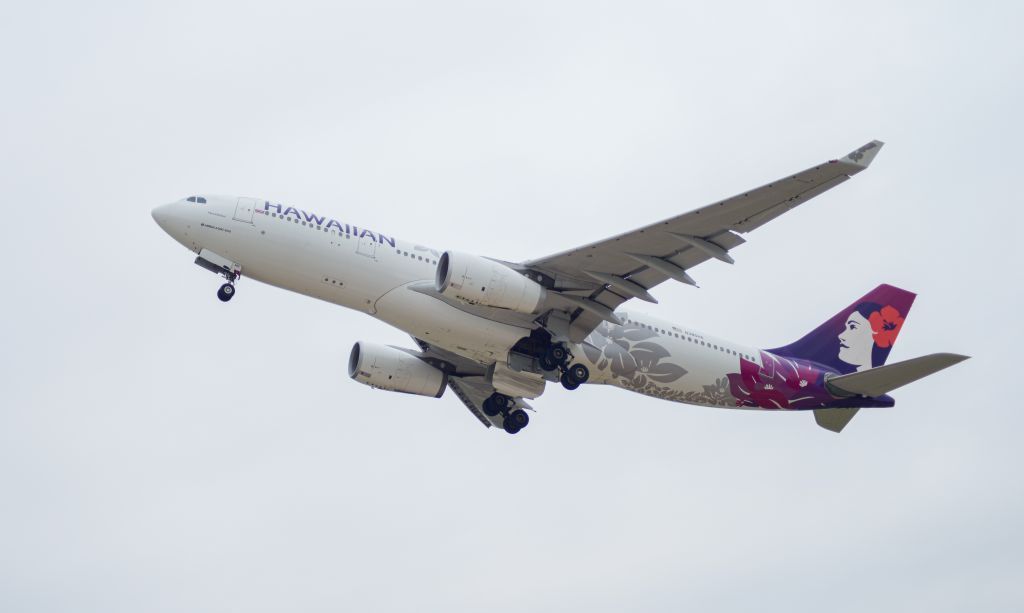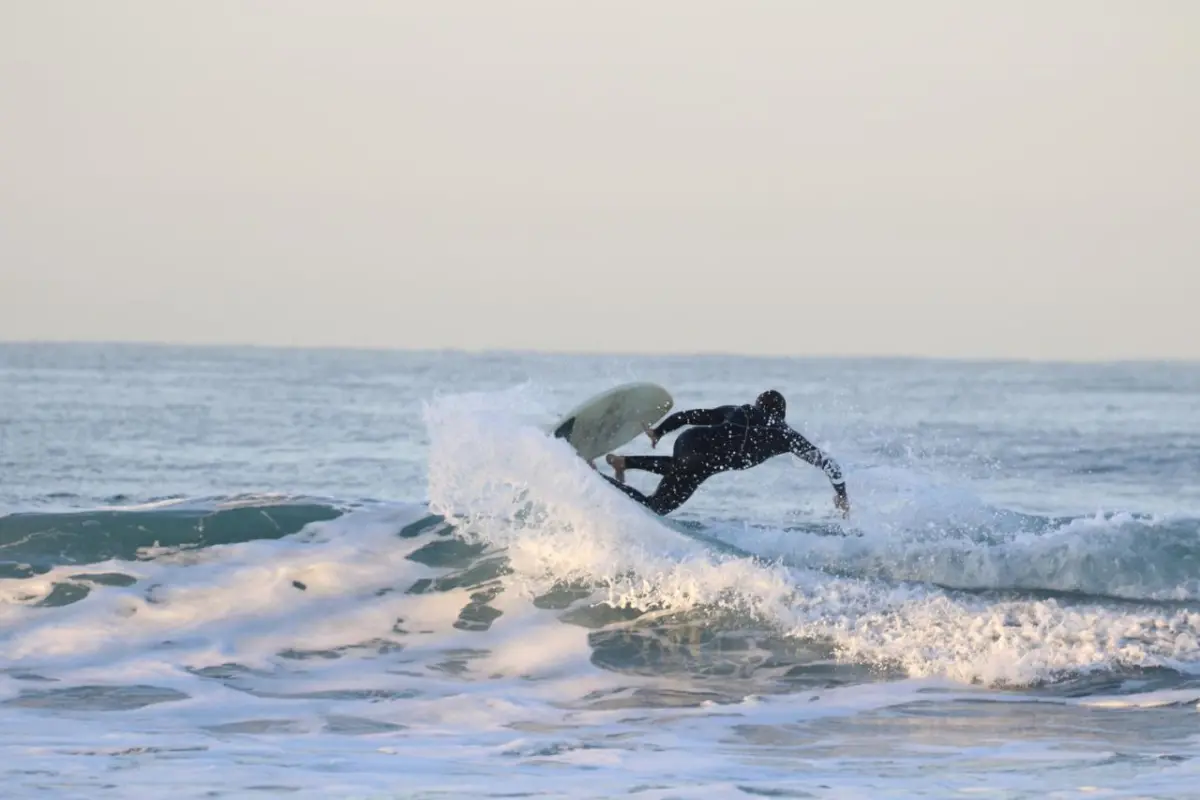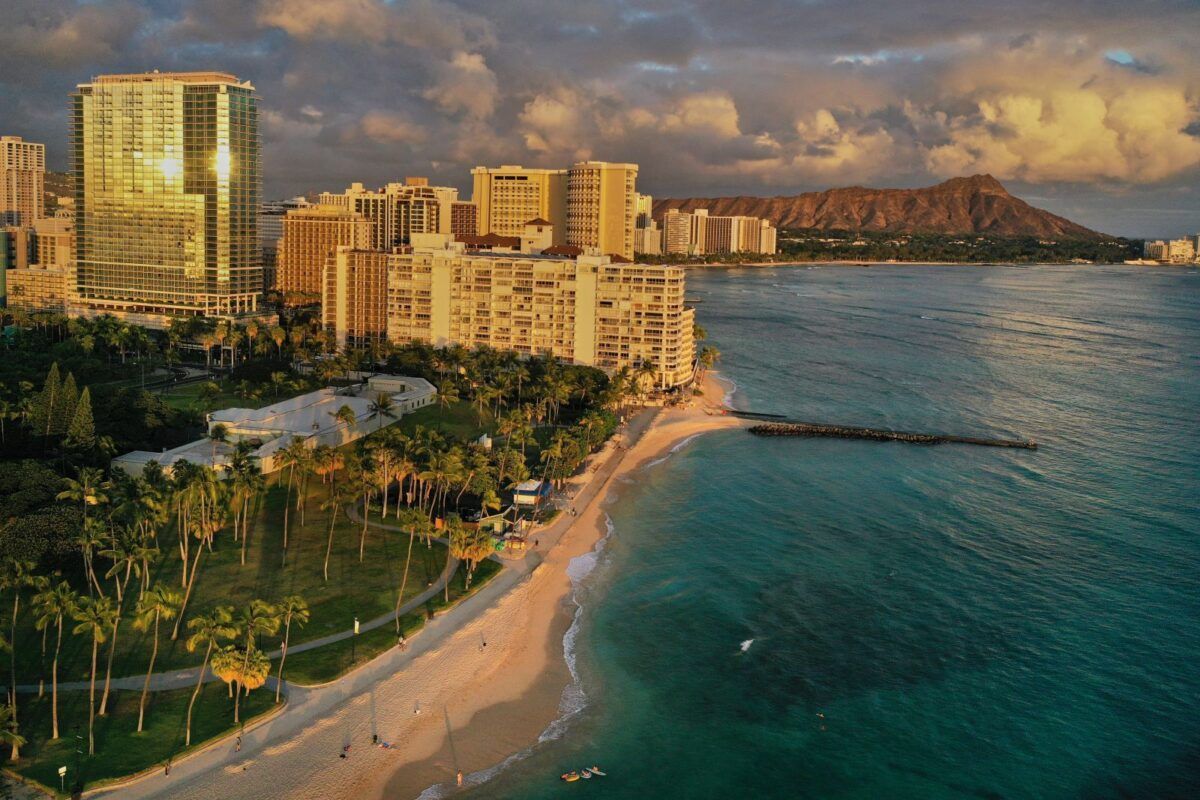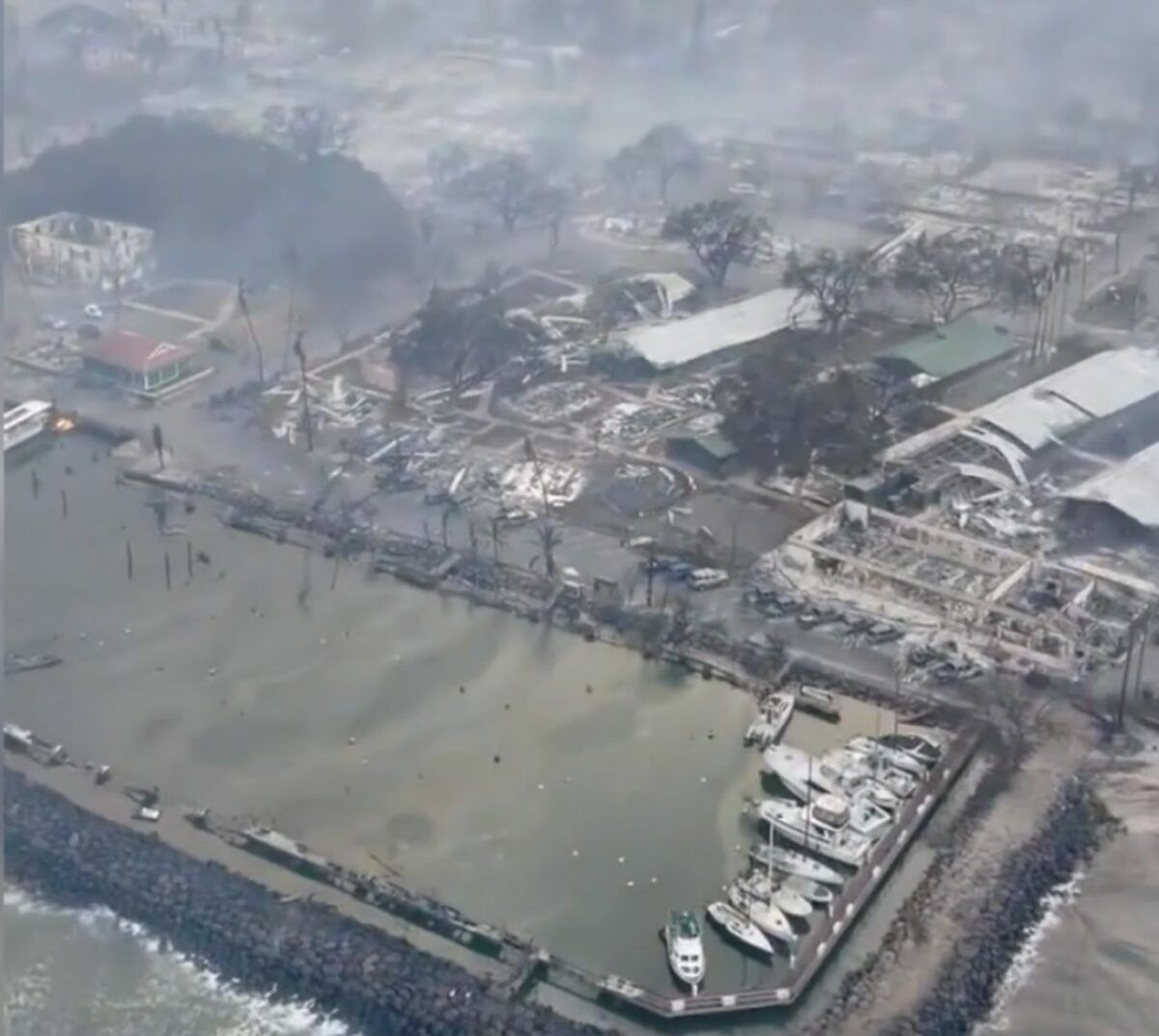Hawai‘i Tourism Authority’s (HTA) Tourism Research Division announced visitor statistics for November 2020 that show significant impacts due to the COVID-19 pandemic.
In November 2020, visitor arrivals decreased 77.3 percent compared to a year ago.
This past November, a total of 183,779 visitors traveled to Hawai‘i by air service, compared to 809,076 visitors who came by air service and cruise ships in November 2019.
Most of the visitors were from the U.S. West (137,452, -63.4%) and U.S. East (40,205, -73.3%).
In addition, 524 visitors came from Japan (-99.6%) and 802 came from Canada (-98.4%). There were 4,795 visitors from All Other International Markets (-94.3%). Many of these visitors were from Guam, and a small number of visitors were from the Philippines, Other Asia, Europe, Latin America, Oceania, and the Pacific Islands. Total visitor days *1 declined 65.9 percent compared to November of last year.
In the first 11 months of 2020, total visitor arrivals dropped 73.7 percent to 2,480,401 visitors, with considerably fewer arrivals by air service (-73.7% to 2,450,610) and by cruise ships (-77.5% to 29,792) compared to the same period a year ago. Total visitor days fell 68.4 percent.
Year-to-date, visitor arrivals by air service decreased from U.S. West (-72.4% to 1,154,401), U.S. East (-70.7% to 604,524), Japan (-79.5% to 295,354), Canada (-66.9% to 157,367) and All Other International Markets (-79.2% to 238,963).
Beginning October 15, passengers arriving from out-of-state and traveling inter-county could bypass the mandatory 14-day self-quarantine with a valid negative COVID-19 NAAT test result from a Trusted Testing and Travel Partner.
Starting November 6, travelers from Japan could also bypass the mandatory quarantine in Hawai‘i with a negative test result from a trusted testing partner in Japan. However, upon returning to Japan, the travelers were subject to a 14-day quarantine.
A new state policy went into effect on November 24 requiring all trans-Pacific travelers participating in the pre-travel testing program to have a negative test result before their departure to Hawai‘i, and test results would no longer be accepted once a traveler arrives in the state.
Kaua‘i, Hawai‘i Island, Maui, and Moloka‘i also had a partial quarantine in place in November. Lāna‘i residents and visitors were under a stay-at-home order from October 27 to November 11. In addition, the U.S. Centers for Disease Control and Prevention (CDC) continued to enforce the “No Sail Order” on all cruise ships.
Spending statistics for November 2020 were all from U.S. visitors. Data by visitors from other markets were not available. U.S. West visitors spent $251.9 million (-55.3%) in November 2020, and their average daily spending was $156 per person (-12.8%). U.S. East visitors spent $86.5 million (-71.8%) and $160 per person on an average daily basis.
A total of 440,846 trans-Pacific air seats serviced the Hawaiian Islands in November, down 58.9percent from a year ago. There were no scheduled seats from Canada and Oceania, and considerably fewer scheduled seats from Other Asia (-99.2%), Japan (-98.4%), U.S. East (-56.5%), U.S. West (-43.5%), and Other countries (-50.5%) compared to a year ago.
Other Highlights
U.S. West: In November, 110,942 visitors arrived from the Pacific region compared to 299,538visitors a year ago, and 26,510 visitors came from the Mountain region compared to 65,587 a year ago. Through the first 11 months of 2020, visitor arrivals decreased substantially from both the Pacific (-73.3% to 880,743) and Mountain (-68.3% to 253,168) regions year-over-year.
For California, a limited stay at home order was in effect on Nov. 21 due to a resurgence of COVID-19 cases. California residents returning home were advised to self-quarantine for 14 days. Oregon was in a statewide two-week freeze from November 18 to December 2, with risk reduction measures limiting gatherings, limiting operations of retail and dining establishments, closing gyms and recreation activities, and requiring most businesses to mandate work-from-home for their employees. For Washington, a travel advisory was issued asking residents to stay close to home, and a 14-day quarantine was recommended for returning residents.
U.S. East: Of the 40,205 U.S. East visitors in November, the majority were from the West South Central (-63.1% to 9,744), South Atlantic (-71.5% to 9,649) and East North Central (-75.2% to 7,241) regions. Through the first 11 months of 2020, visitor arrivals declined significantly from all regions. The three largest regions, East North Central (-67.8% to 124,301), South Atlantic (-74.1% to 117,370) and West North Central (-58.1% to 101,152) saw sharp decreases compared to the first 11 months of 2019.
In New York, returning residents had to obtain a COVID test within three days of departure and must quarantine for three days. On day four of their quarantine, the traveler must obtain another COVID test. If both tests came back negative, the traveler may exit quarantine early upon receipt of the second negative diagnostic test.
Japan: In November, 524 visitors arrived from Japan compared to 131,536 visitors a year ago.Of the 524 visitors, 428 arrived on international flights from Japan and 96 came on domestic flights. Year-to-date through November, arrivals dropped 79.5 percent to 295,354 visitors.
Starting November 6, travelers from Japan could bypass Hawai‘i’s mandatory quarantine with a negative test result from a trusted testing partner in Japan. However, most Japanese nationals returning from abroad must quarantine for 14 days except for qualified business travelers who returned from overseas trips lasting one week or less. These business travelers must have proof of a negative coronavirus test and they were restricted to only commute between work and home.
Canada: In November, 802 visitors arrived from Canada compared to 50,598 visitors a year ago. All 802 visitors came to Hawai‘i on domestic flights. Year-to-date through November, arrivals were down 66.9 percent to 157,367 visitors. U.S. land borders with Canada have been partially closed since March 2020. Canadians were allowed to travel to the U.S. by air, and returning Canadian residents must self-isolate for 14 days.
Australia: There were 65 visitors who traveled to Hawai‘i in November compared to 18,725visitors a year ago. All 65 visitors came on domestic flights. Through the first 11 months of 2020, arrivals declined 81.0 percent to 50,228 visitors. The Australian government continued to impose a ban on all overseas travel for Australians, unless an exemption was granted. Residents returning to Australia were required to undergo a mandatory 14-day quarantine.
New Zealand: There were 51 visitors in November versus 4,338 visitors a year ago. These 51 visitors arrived on domestic flights. Through the first 11 months of 2020, arrivals declined 84.5 percent to 10,877 visitors. The New Zealand government advised New Zealanders to refrain from travel overseas due to COVID-19 health risks and travel restrictions. Residents returning to New Zealand were required to complete at least 14 days of quarantine and test negative for COVID-19 before entering the community.
China: There were 188 visitors in November compared to 4,258 visitors a year ago. These 188 visitors arrived on domestic flights. Year-to-date through November, arrivals decreased 87.8 percent to 10,348 visitors. Returning Chinese nationals were required to demonstrate proof of a negative COVID-19 result issued no more than 72 hours before departure, performed by an approved provider, and were mandated to undergo a 14-day mandatory quarantine.
Korea: There were 97 visitors in November versus 20,272 visitors a year ago. Of the 97 visitors, 83 arrived on domestic flights and 14 arrived on an international flight from a major carrier whichflies both domestic and international routes. Through the first 11 months of 2020, arrivals fell 79.7 percent to 41,959 visitors. Residents returning to Korea were tested on arrival for COVID-19, installed with Self-Quarantine Safety Protection App on their phone to monitor their health, and subjected to a mandatory 14-day quarantine.
Taiwan: There were 31 visitors in November compared to 990 visitors a year ago. These 31 visitors came on domestic flights. Year-to-date through November, arrivals dropped 84.6 percentto 3,512 visitors. Returning Taiwanese residents were required to quarantine for 14 days.
Europe: There were 330 visitors from Europe (United Kingdom, France, Germany, Italy and Switzerland) in November versus 9,097 visitors a year ago. These 330 visitors arrived on domestic flights. Through the first 11 months of 2020, arrivals decreased 83.4 percent to 21,198 visitors. Germany, imposed a month-long lockdown on 2 November due to a second wave of COVID-19. Returning German nationals must present a certificate showing a negative result for COVID-19 issued no more than 48 hours prior to departure. Individuals unable to produce such a certificate must undergo testing on arrival and required to self-isolate pending their test results. In the United Kingdom, a national lockdown was enforced on November 5 until December 2, 2020. Returning residents to the U.K. were required to self-quarantine for 14 days.
Latin America: There were 239 visitors from Latin America (Mexico, Brazil and Argentina) in November compared to 1,272 visitors a year ago. These 239 visitors came on domestic flights. Year-to-date through November, arrivals dropped 74.9 percent to 5,710 visitors. In Argentina, all incoming travelers including returning residents must submit a valid negative PCR test completed up to 72 hours before travel or subject to quarantine. In Mexico, the U.S. and Mexican border restrictions ended November 21. The restrictions applied to non-essential crossings but not commerce. There were no quarantine restrictions for returning Mexican nationals.



